Have you ever wondered, “Is Brown Rice Easy to Digest?” Many people struggle with digestive discomfort from various foods, particularly grains. Brown rice, however, stands out as a beneficial choice for those seeking digestive ease. In this blog, we’ll explore how this nutritious grain can be a game-changer for your digestive health, offering both comfort and essential nutrients.
“Is Brown Rice Easy to Digest?” You might be surprised to learn that brown rice is not just a health food staple but also a champion for your digestive system. Contrary to popular belief, its unique composition makes it surprisingly easy to digest. Join us as we delve into the reasons why brown rice is an excellent choice for those looking for a gut-friendly, nutritious grain.
1. Definition and characteristics of brown rice
Brown rice is a type of rice that keeps the good parts – the bran and germ layers – which makes it brown or tan. It’s really good for you because it’s full of fiber, stuff that fights off bad cells (antioxidants), and important vitamins and minerals. It’s better than white rice because it has more fiber, antioxidants, and vitamins like thiamine, niacin, vitamin B6, and minerals like magnesium, phosphorus, iron, and zinc. People all over the world eat it because brown rice is good for health, helps to digest better, and is part of eating well. You can use brown rice as a side dish or in different recipes because it’s so healthy.
Note: If you’re cooking brown rice, use a bit more water than you would for white rice. Soaking it before you cook can make it cook faster and help your body use the nutrients better. It goes well with lots of veggies and meats, so it’s great for making meals that are good for you. If you need more fiber in your diet for your stomach health, brown rice is a great choice.

2. Digestive Benefits of Brown Rice Compared to White Rice
Brown rice and white rice differ in how they affect digestion and their health benefits. Here are the main differences:
- Fiber content: Brown rice contains more fiber than white rice. This higher fiber helps with digestion and keeps you feeling full longer. A cup of brown rice gives you about 11% of your daily fiber needs, while white rice only gives you 2.1%.
- Glycemic index: The glycemic index of brown rice is lower than that of white rice. This means brown rice doesn’t raise your blood sugar as much after you eat it. This is especially helpful for people who need to watch their blood sugar levels.
- Nutrient content: Brown rice has more vitamins, minerals, and antioxidants than white rice. But, white rice is often added with some nutrients that are lost when it’s made, which narrows the nutritional gap between the two.
- Digestive issues: White rice is gentler on the stomach, making it a better choice for those with digestive problems like inflammatory bowel disease or after bowel surgery.
In conclusion, brown rice is usually the healthier option because of its higher fiber and lower effect on blood sugar. However, white rice is easier to digest and might be better for people with certain stomach issues. It’s important to pick the type of rice that suits your health needs and preferences.
Note: If you have trouble digesting fiber, start with small amounts of brown rice and gradually increase. For those watching their blood sugar levels, pairing brown rice with protein and healthy fats can help balance the meal. White rice can be a part of a healthy diet too, especially when combined with a variety of other nutrient-rich foods.
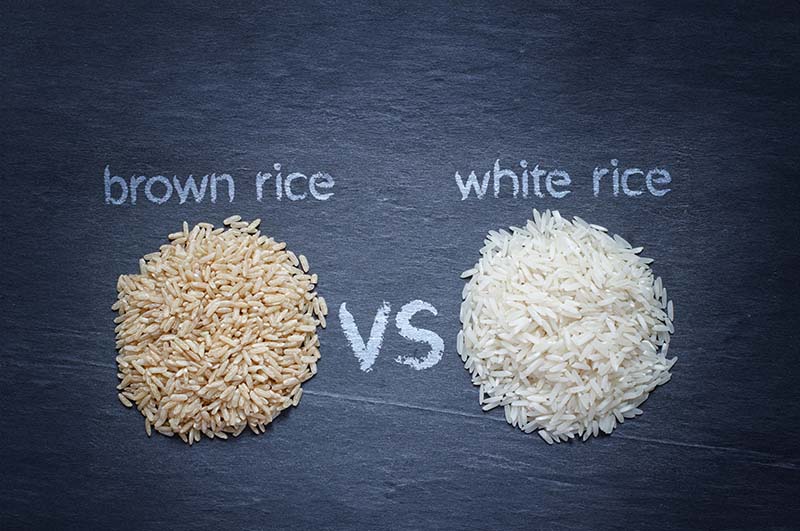
3. Brown Rice in Preventing Digestive Issues
Brown rice is a great choice for helping with digestive issues, thanks to its high fiber content. This fiber helps move food through the intestines smoothly, which can lead to more regular bowel movements. This helps with problems like hemorrhoids and constipation. Plus, brown rice can speed up the removal of toxins from your digestive system, improving gut health.
However, it’s worth noting that brown rice contains insoluble fiber, which can sometimes irritate a sensitive stomach. This might lead to gas, bloating, and other uncomfortable symptoms for some people. So, if you’re starting to eat brown rice, it’s a good idea to begin with small amounts and gradually increase how much you eat. This gives your gut time to get used to it.
Note: To ease into eating brown rice, try mixing it with white rice at first. This can help your digestive system adjust more comfortably. Also, drinking plenty of water when increasing fiber intake can help you digest and reduce potential discomfort. Brown rice is versatile, so you can experiment with it in different recipes to see what works best for your diet.

4. Brown Rice vs Other Cereals
Brown rice and various cereals can be contrasted based on their nutrition, flavor, texture, and how they’re cooked. Here’s a breakdown comparing brown rice with common cereals:
Nutritional Content:
- Brown rice: Packed with dietary fiber, vitamins, and minerals like manganese, phosphorus, and magnesium. It’s a great source of complex carbohydrates and has a lower glycemic index than white rice, making it beneficial for steady energy levels and diabetes management.
- Other cereals: Cereals such as cornflakes, oatmeal, and muesli are often enriched with vitamins and minerals, boosting their nutritional value. However, they typically contain more sugar and less fiber than brown rice.
Taste and Texture:
- Brown rice: Offers a nuttier, earthier taste and a chewier texture than white rice, which can be more satisfying for those who enjoy robust flavors and textures.
- Other cereals: The taste and texture of cereals vary widely, ranging from crunchy and sweet to soft and mild. Some are designed to be eaten dry, while others are best when cooked or soaked in milk. Taste preference is key in choosing among them.
Cooking Properties:
- Brown rice: Requires a longer cooking time, about 45-50 minutes, and more water than white rice. Overcooking can lead to a mushy texture.
- Other cereals: Cooking times vary; for instance, oatmeal cooks in 5-10 minutes, whereas cornflakes just need a few minutes to soak in milk.
Versatility:
- Brown rice: Extremely versatile, it’s used in dishes like stir-fries, pilafs, salads, soups, and even ground into flour for baking.
- Other cereals: Commonly eaten for breakfast, they’re also incorporated into recipes like granola bars, energy bites, or baked goods, and can be a snack or a topping for yogurt or ice cream.
In conclusion, brown rice and other cereals each have distinct nutritional qualities, tastes, textures, and cooking methods. Choosing between them depends on personal taste, dietary needs, and the intended use. Both can be part of a balanced diet when eaten in moderation and as part of diverse meals.
Note: When trying to reduce sugar intake, carefully check the labels of fortified cereals for added sugars. For those looking to increase protein intake, consider combining brown rice with legumes, as this combination forms a complete protein.
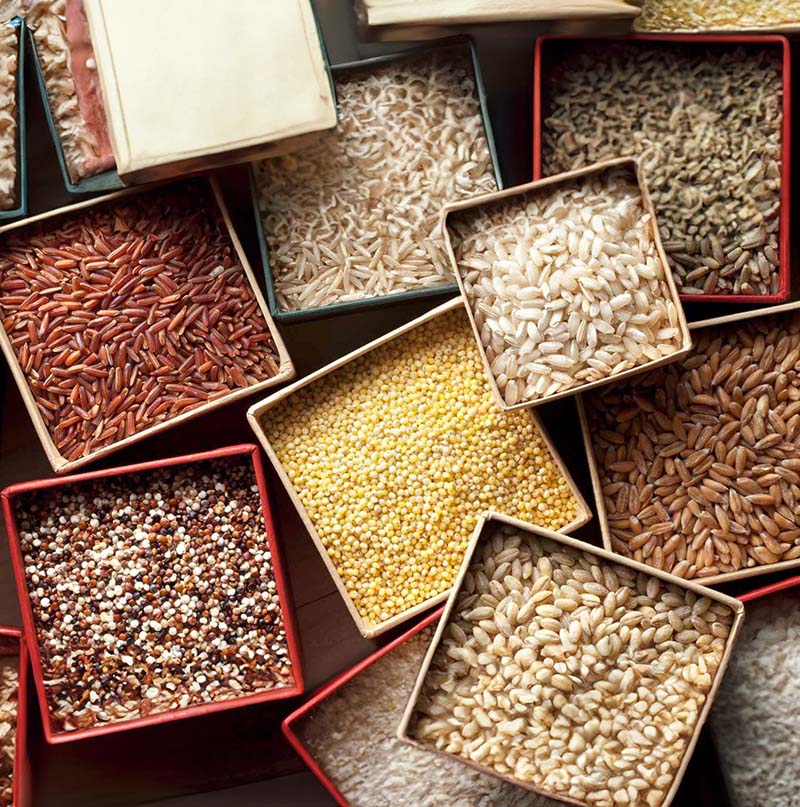
5. Integrating Brown Rice into Your Diet
Adding brown rice to your diet is a smart and easy way to boost your health. Here are some ways to include brown rice in your meals:
- Switch from White to Brown Rice: Use brown rice instead of white rice in your favorite dishes like stir-fries, pilafs, or as a side. This easy change can boost your intake of fiber and nutrients.
- Explore Different Brown Rice Varieties: Try various types of brown rice, such as long-grain, short-grain, or basmati. Each type has its own unique taste and texture, so you can find one that you really like.
- Cook Brown Rice in Bulk: Make a big batch of brown rice and store it in the fridge or freezer. This way, you have ready-to-use rice for your meals during the week, saving you cooking time.
- Add Brown Rice to Soups and Stews: Mix brown rice into soups, stews, or casseroles to boost their nutrition and give them a satisfying, hearty texture.
- Try Brown Rice Products: Look for products made from brown rice, like brown rice pasta, cereal, and flour. These are great alternatives to explore different ways to eat brown rice.
- Combine Brown Rice with Protein and Veggies: For a balanced and nutritious meal, pair brown rice with lean proteins like chicken, fish, or tofu, and add a variety of vegetables.
- Make Grain Bowls with Brown Rice: Create your own grain bowl by topping brown rice with your choice of vegetables, proteins, and extras like avocado, nuts, and seeds.
- Use Brown Rice in Desserts: Brown rice can be a healthy addition to desserts. Try making rice pudding with brown rice for a healthier version of this classic sweet treat.
Note: When cooking brown rice, remember it takes a bit longer to cook than white rice, so plan accordingly. Also, rinsing brown rice before cooking can help remove any excess starch, resulting in a better texture. For those new to brown rice, start by mixing it with white rice and gradually increasing the amount of brown rice. This can make the transition easier and more enjoyable.

6. Brown Rice and its Impact on Gut Health and Immunity
Brown rice is really good for your gut health and helps strengthen your immune system. If you let brown rice sprout a little before eating it, it’s even better for you. It can boost your mood and immune system, help prevent problems related to diabetes, and support healthy immune cells.
Brown rice is also great for keeping your heart and blood vessels healthy. It helps control blood sugar levels, prevents high cholesterol, calms your mind, and keeps your kidneys and liver working well. Plus, it can help if you drink a lot of alcohol.
This rice is full of antioxidants, which protect your cells from damage. This lowers your risk of getting diseases like heart problems, diabetes, obesity, and cancer. The fiber in brown rice is also important for a healthy gut because it helps good bacteria grow in your intestines. These bacteria make something called butyrate, which reduces swelling and keeps your gut healthy. This is especially helpful for people who have type 2 diabetes, as brown rice can help balance their digestive and hormone health.
Note: To get the most out of brown rice, try soaking or sprouting it before cooking. This makes it easier for your body to use the nutrients and it cooks faster too. Eating brown rice as part of a diet with lots of different healthy foods can increase its benefits. If you’re not used to eating a lot of whole grains, start with a little brown rice and increase it slowly so your body can get used to the extra fiber.
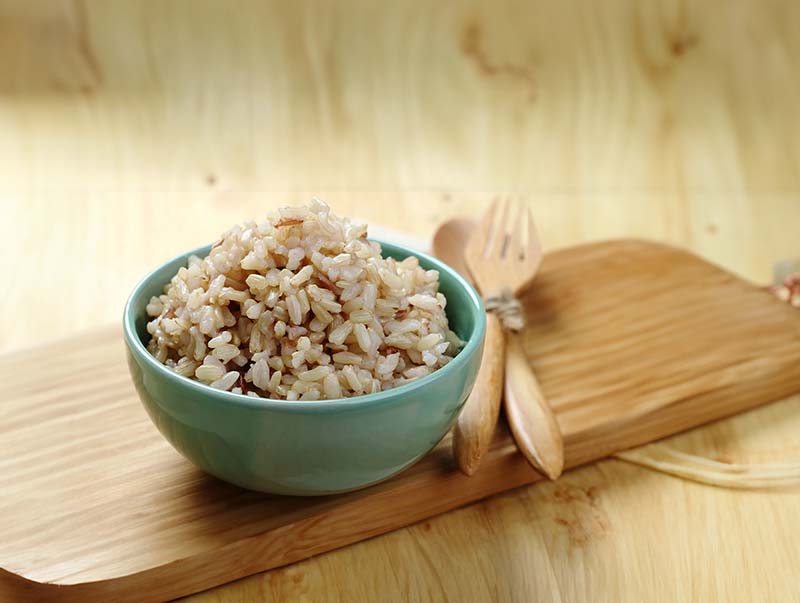
7. Optimal Cooking Methods for Brown Rice
Cooking brown rice well can really enhance its nutty taste and keep its texture just right. Here are some effective methods to cook brown rice:
Stovetop Method:
- First, rinse the brown rice under cold water until the water runs clear.
- In a pot with a lid, bring water to a boil.
- Use a 1:2 ratio – for every cup of brown rice, use two cups of water.
- Once you add the rice to the boiling water, lower the heat, cover the pot, and let it simmer for 40-50 minutes, or until all the water is absorbed and the rice is soft.
- After cooking, let the rice sit covered for about 5-10 minutes, then fluff it with a fork before serving.
Instant Pot or Pressure Cooker Method:
- Rinse the brown rice thoroughly under cold water first.
- Put 1 cup of brown rice and 1 3/4 cups of water into an Instant Pot or pressure cooker.
Note: The key to cooking brown rice is getting the water ratio right. If the rice is too hard after the initial cooking, you can add a little more water and cook for a few more minutes. If you like your rice softer, you can soak it for 30 minutes before cooking. Remember, brown rice takes longer to cook than white rice, so plan accordingly. In a pressure cooker, the cooking time is reduced, making it a convenient option for those with less time. Experiment with these methods to find your perfect texture and flavor.

8. Overall Nutritional Benefits of Brown Rice
Brown rice offers a range of nutritional benefits, making it a healthy choice for many diets:
- Low in Calories: A cup of cooked brown rice has just 216 calories, making it a great option for those watching their calorie intake.
- High in Fiber: It’s richer in fiber compared to white rice. This helps with digestion and keeps you feeling full longer.
- Packed with Vitamins and Minerals: Brown rice has more vitamins and minerals than white rice, including thiamine, niacin, vitamin B6, magnesium, phosphorus, iron, and zinc.
- Rich in Antioxidants: It’s a good source of antioxidants like phenols and flavonoids, which protect your body from damage caused by free radicals.
- Better for Blood Sugar Control: With a lower glycemic index than white rice, brown rice doesn’t cause big spikes in blood sugar levels, making it a better choice for maintaining steady blood sugar.
- Heart-Healthy: It doesn’t have any trans-fat or cholesterol, and it’s low in both fat and sodium, which is good for heart health.
Note: To get the most out of brown rice, it’s best to integrate it into a balanced diet. Pairing it with a source of protein and vegetables can make a complete, nutritious meal. Also, for those new to brown rice, it may take some time to adjust to its texture and taste. Starting with a mix of brown and white rice and gradually increasing the proportion of brown rice can be a good way to make the transitio.
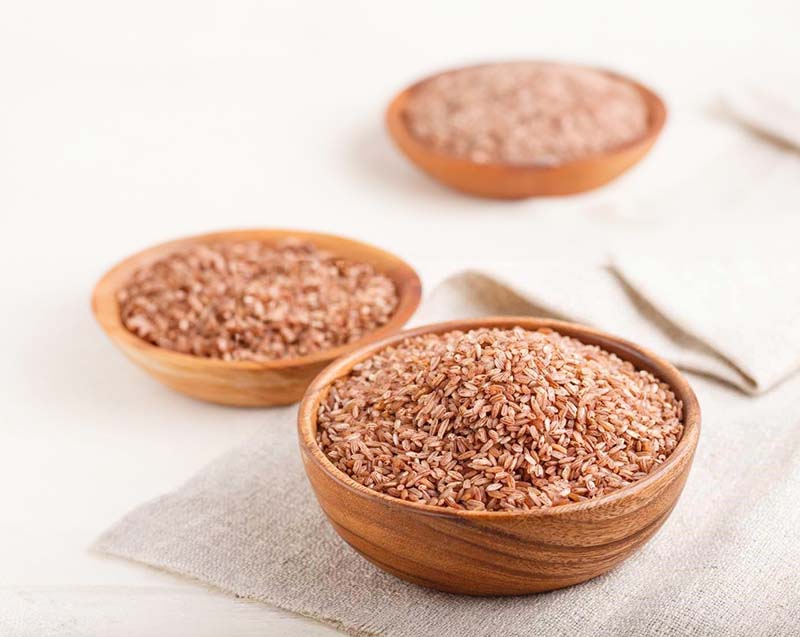
9. Comparing Brown Rice and Other Cereals in Digestibility
Brown rice is often easier to digest than other grains because of its smaller starch structures and granules, and it has less content that’s hard to digest. This makes it a good choice for both humans and animals. When cooked, brown rice expands more slowly than white rice because it has bran in it. It’s also been found to be more digestible in terms of energy than other cereals, likely because it has less dietary fiber and tannins.
One thing to note is that the protein in brown rice might be less digestible after it’s cooked. The protein in milled (processed) rice isn’t as easy for our bodies to use as the protein in raw rice. So, in terms of how easy it is to digest, brown rice is a better option compared to many other common cereals.
Note: For those who are sensitive to fiber or have digestive issues, brown rice can be a gentle option. However, because cooking can affect protein digestibility, it’s a good idea to pair brown rice with other protein sources to ensure a balanced intake. Remember, brown rice takes longer to cook than white rice, so plan accordingly. Experimenting with different cooking methods, like soaking or using a pressure cooker, can also help in making brown rice more digestible and enjoyable to eat.
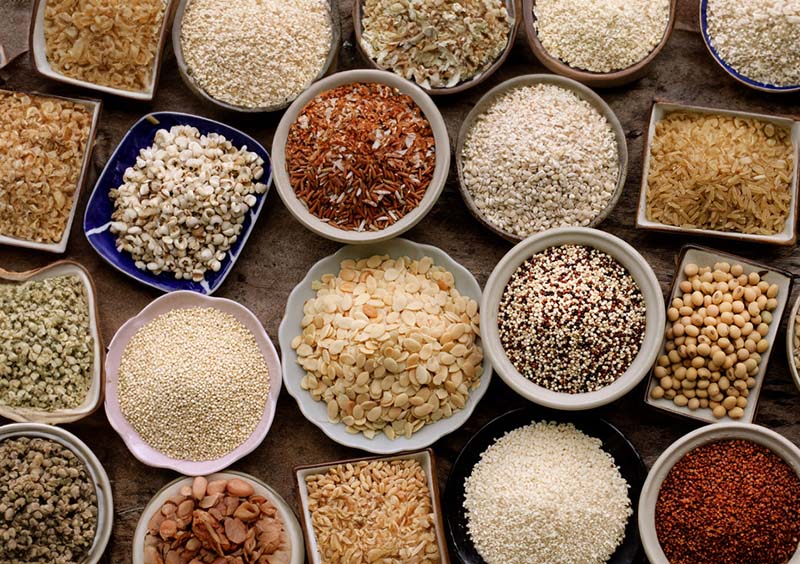
10. Conclusion
Reflecting on the digestibility of brown rice, it’s clear that this nutrient-packed grain stands out as a highly digestible option in comparison to other cereals. Its smaller starch structures and lower non-digestible content make it a friendly choice for both human and animal diets. We’re eager to hear about your experiences with brown rice. How has it impacted your digestive health or overall well-being? Feel free to share your stories and feedback. And for more informative content like this, remember to check out the array of blogs available at Biosculpture. Join us on this journey of health and wellness!


